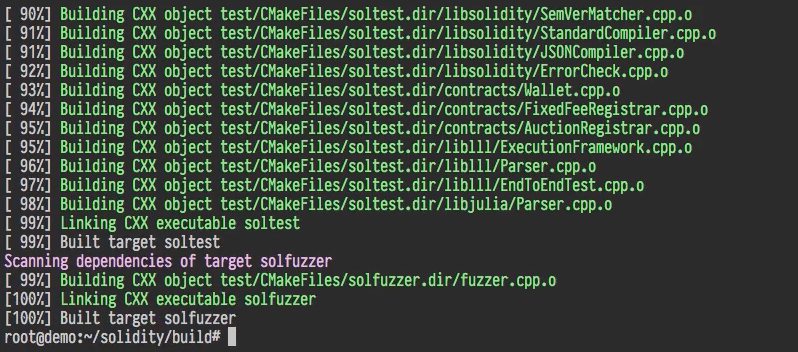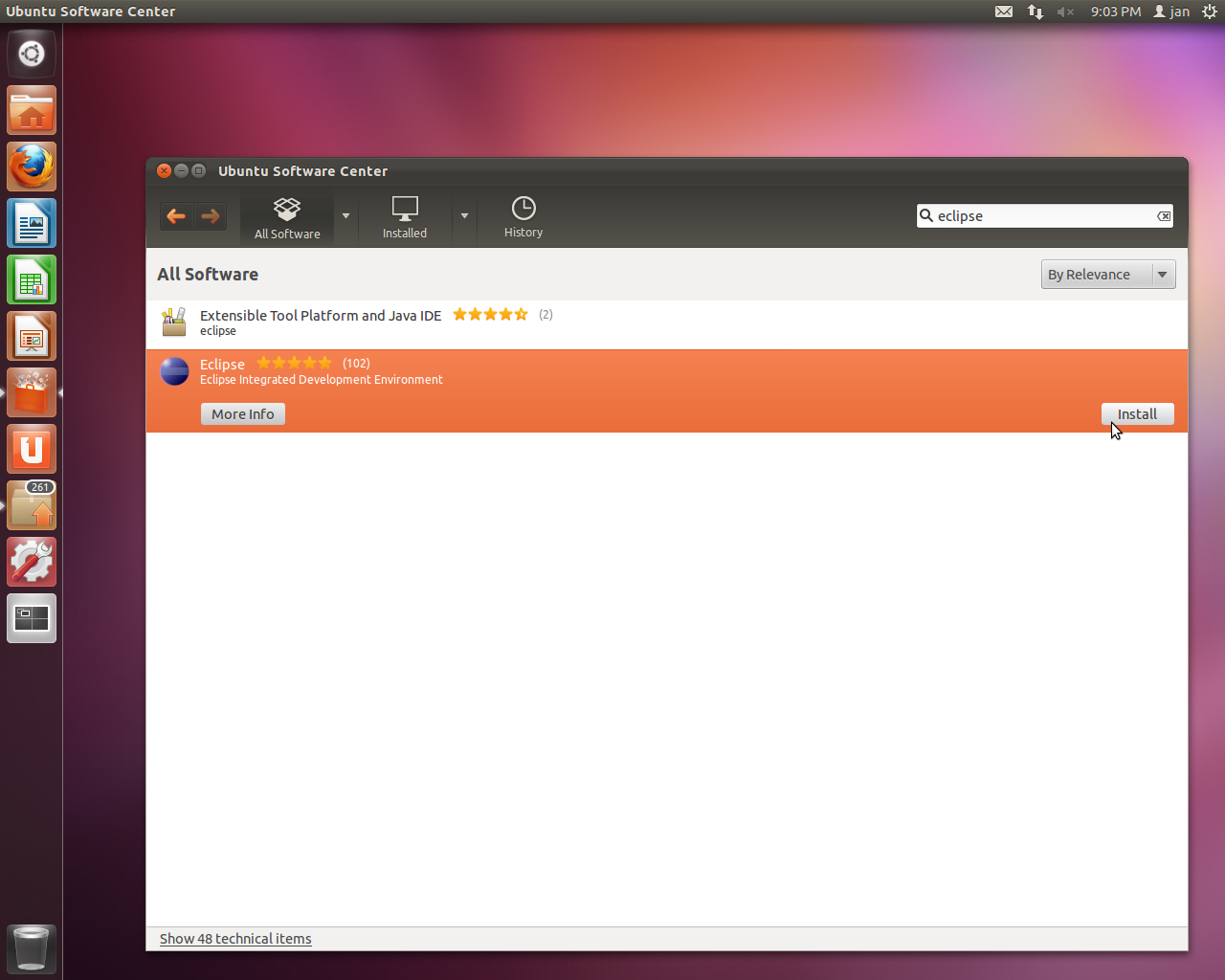This section explains how to install Ubuntu from an existingUnix or Linux system, without using the menu-driven installer asexplained in the rest of the manual. This “cross-install”HOWTO has been requested by users switching to Ubuntu fromDebian, Red Hat, Mandriva, and SUSE. In this section some familiarity withentering *nix commands and navigating the file system is assumed. Inthis section, $ symbolizes a command to be entered inthe user's current system, while # refers to acommand entered in the Ubuntu chroot.
Once you've got the new Ubuntu system configured to your preference,you can migrate your existing user data (if any) to it, and keep onrolling. This is therefore a “zero downtime” Ubuntuinstall. It's also a clever way for dealing with hardware thatotherwise doesn't play friendly with various boot or installationmedia.
| Note |
|---|
As this is a mostly manual procedure, you should bear in mind that youwill need to do a lot of basic configuration of the system yourself,which will also require more knowledge of Ubuntu and of Linux in generalthan performing a regular installation. You cannot expect this procedureto result in a system that is identical to a system from a regularinstallation. You should also keep in mind that this procedure onlygives the basic steps to set up a system. Additional installation and/orconfiguration steps may be needed. In general, this method of installation is not recommended for casual or first time users. |
How to Use Apt-Get to Install Programs in Ubuntu from the Command Line YatriTrivedi @yatritrivedi Updated July 5, 2017, 8:12pm EDT Ubuntu has a lot of GUI-based methods for installing applications, but they take some time to search and find. Aug 23, 2018 Using the search feature you can just type in the name of the software package you want to install and then synaptic would do the search for you and install it along with it dependencies. Happy Linux’NG! The post How to Install Synaptic Package Manager in Ubuntu.
With your current *nix partitioning tools, repartition the harddrive as needed, creating at least one filesystem plus swap. Youneed around 506MB of space available for a console onlyinstall, or about1536MB if you plan to install X (more if you intend toinstall desktop environments such as GNOME or KDE).
Next, create file systems on the partitions. For example, to create anext3 file system on partition /dev/sda6 (that'sour example root partition):
To create an ext2 file system instead, omit -j.
Initialize and activate swap (substitute the partition number foryour intended Ubuntu swap partition):
| Note |
|---|
Instead of using a dedicated swap partition, you may omit the swap partition setup here and later just use a swap file instead. |
Mount one partition as /mnt/ubuntu (theinstallation point, to be the root (/) filesystemon your new system). The mount point name is strictly arbitrary, it isreferenced later below.
| Note |
|---|
If you want to have parts of the filesystem (e.g. /usr) mounted onseparate partitions, you will need to create and mount these directoriesmanually before proceding with the next stage. |
The utility used by the Ubuntu installer, and recognized as theofficial way to install an Ubuntu base system, isdebootstrap. It uses wget andar, but otherwise depends only on/bin/sh and basic Unix/Linux tools[22]. Install wget andar if they aren't already on your current system,then download and install debootstrap.If these steps are executed under Ubuntu you can simply do this by apt install debootstrap.
If you have an RPM (Red Hat Package Manager) based system, you can use alien, which is available in the Debian repositories, to convert the .deb file to a useable .rpm file.
Or, you can use the following procedure to install itmanually. Make a work folder for extracting the .deb into:
The debootstrap binary is located in the Ubuntuarchive (be sure to select the proper file for yourarchitecture). Download the debootstrap .deb fromthe pool, copy the package to the work folder, and extract thefiles from it. You will need to have root privileges to installthe files.
debootstrap can download the needed files directlyfrom the archive when you run it. You can substitute any Ubuntuarchive mirror for ports.ubuntu.com/ubuntu-ports inthe command example below, preferably a mirror close to younetwork-wise. Mirrors are listed athttp://wiki.ubuntu.com/Archive.

If you have an Ubuntu bionic CD mounted at/cdrom, you could substitute a file URL insteadof the http URL: file:/cdrom/ubuntu/
Substitute one of the following for ARCHin the debootstrap command:amd64,arm64,armhf,i386,powerpc,ppc64el, ors390x.
Now you've got a real Ubuntu system, though rather lean, on disk.chroot into it:
After chrooting you may need to set the terminal definition to becompatible with the Ubuntu base system, for example:
Depending on the value of TERM, you may have to install thencurses-term package to get support for it.
| Note |
|---|
If warnings occur like: The required localization files need to be generated: |
Debootstrap will have created a very basic /etc/apt/sources.list that will allow installingadditional packages. However, it is suggested that you add some additional sources,for example for source packages and security updates:
Make sure to run apt update after you havemade changes to the sources list.
Now it's required to install some additionally required packages, like makedev (needed for the next section):apt install makedev
At this point /dev/ only contains very basic devicefiles. For the next steps of the installation additional device files maybe needed. There are different ways to go about this and which method youshould use depends on the host system you are using for the installation,on whether you intend to use a modular kernel or not, and on whether youintend to use dynamic (e.g. using udev) or staticdevice files for the new system.
A few of the available options are:
create a default set of static device files using (after chrooting)
manually create only specific device files using MAKEDEV
bind mount /dev from your host system on top of /dev in the target system, like:
Note that the postinst scripts of some packages may try to create device files,so this option should only be used with care.
You need to create /etc/fstab.
Here is a sample you can modify to suit:
Use mount -a to mount all the file systems youhave specified in your /etc/fstab, or, to mountfile systems individually, use:
Current Ubuntu systems have mountpoints for removable media under/media, but keep compatibility symlinks in/. Create these as as needed, for example:
You can mount the proc and sysfs file systems multiple times and to arbitrarylocations, though /proc and /sys respectively are customary. If you didn't usemount -a, be sure to mount proc and sysfs before continuing:
The command ls /proc should now show a non-emptydirectory. Should this fail, you may be able to mount proc from outsidethe chroot:
Setting the third line of the file /etc/adjtime to “UTC” or “LOCAL” determineswhether the system will interpret the hardware clock as being set to UTCrespective local time. The following command allows you to set that.
Here is a sample:
The following command allows you to choose your timezone.
Install Dev C In Ubuntu Using Terminal 2
To configure networking, edit/etc/network/interfaces, /etc/resolv.conf,/etc/hostname and/etc/hosts.
Here are some simple examples from/usr/share/doc/ifupdown/examples:
Enter your nameserver(s) and search directives in/etc/resolv.conf:
How To Use Ubuntu Terminal
A simple example /etc/resolv.conf:
Enter your system's host name (2 to 63 characters):
And a basic /etc/hosts with IPv6 support:
If you have multiple network cards, you should arrange the names ofdriver modules in the /etc/modules file into thedesired order. Then during boot, each card will be associated with theinterface name (eth0, eth1, etc.) that you expect.
To configure your locale settings to use a language other thanEnglish, install the appropriate language packs and configure them.Currently the use of UTF-8 locales is recommended.
To configure your keyboard (if needed):
Note that the keyboard cannot be set while in the chroot, but will beconfigured for the next reboot.
If you intend to boot this system, you probably want a Linux kerneland a boot loader. Identify available pre-packaged kernels with:
Then install the kernel package of your choice using its package name.
(You may want install linux-image-generic, too.)
To make your Ubuntu system bootable, set up your boot loader to loadthe installed kernel with your new root partition. Note thatdebootstrap does not install a boot loader, though youcan use apt inside your Ubuntu chroot to do so.
Note that this assumes that a /dev/sda device file hasbeen created. There are alternative methods to install grub2,but those are outside the scope of this appendix.
Check man yaboot.conf for instructions onsetting up the bootloader. If you are keeping the system you used toinstall Ubuntu, just add an entry for the Ubuntu install to yourexisting yaboot.conf. You could also copy it tothe new system andedit it there. After you are done editing, call ybin (remember it willuse yaboot.conf relative to the system you call it from).
Here is a basic /etc/yaboot.conf as an example:
On some machines, you may need to use ide0:instead of hd:.
D.4.7. Remote access: Installing SSH and setting up access

In case you can login to the system via console, you can skip this section. Ifthe system should be accessible via the network later on, you need to installSSH and set up access.
Root login with password is disabled by default, so setting up access can bedone by setting a password and re-enable root login with password:

This is the option to be enabled:
Access can also be set up by adding an ssh key to the root account:
Lastly, access can be set up by adding a non-root user and setting a password:
As mentioned earlier, the installed system will be very basic. If youwould like to make the system a bit more mature, there is an easy methodto install all packages with “standard” priority:
Of course, you can also just use apt to installpackages individually.
After the installation there will be a lot of downloaded packages in/var/cache/apt/archives/. You can free up somediskspace by running:
Use the adduser command to create a new user account:
You will be prompted for a full name and a password.
The normal Ubuntu configuration is to allow this new user to administer thesystem using sudo. To set this up, first create anadmin group and add your new user to it:
You can now use the visudo command to add these lines tothe end of /etc/sudoers, so that any user in theadmin group can administer the system:
If you don't want to follow this configuration, then remember to set a rootpassword:
Install Ubuntu Desktop From Terminal
At this point, you probably want to reboot into your new Ubuntu system tomake sure it all works. Once you've done that, log in as the user you justcreated, and run:
You will need to enter your password to authorise sudo torun as root.
tasksel will now get on with installing the packagesthat make up the Ubuntu desktop, which will take a while. When it'sfinished, you should be presented with a graphical login prompt. Theinstallation is now complete, so go ahead and log in.
Ubuntu Install C++ Dev Tools
Install Dev C++ In Ubuntu Using Terminal 4
[22] These include the GNU core utilities and commands like sed, grep, tar and gzip.